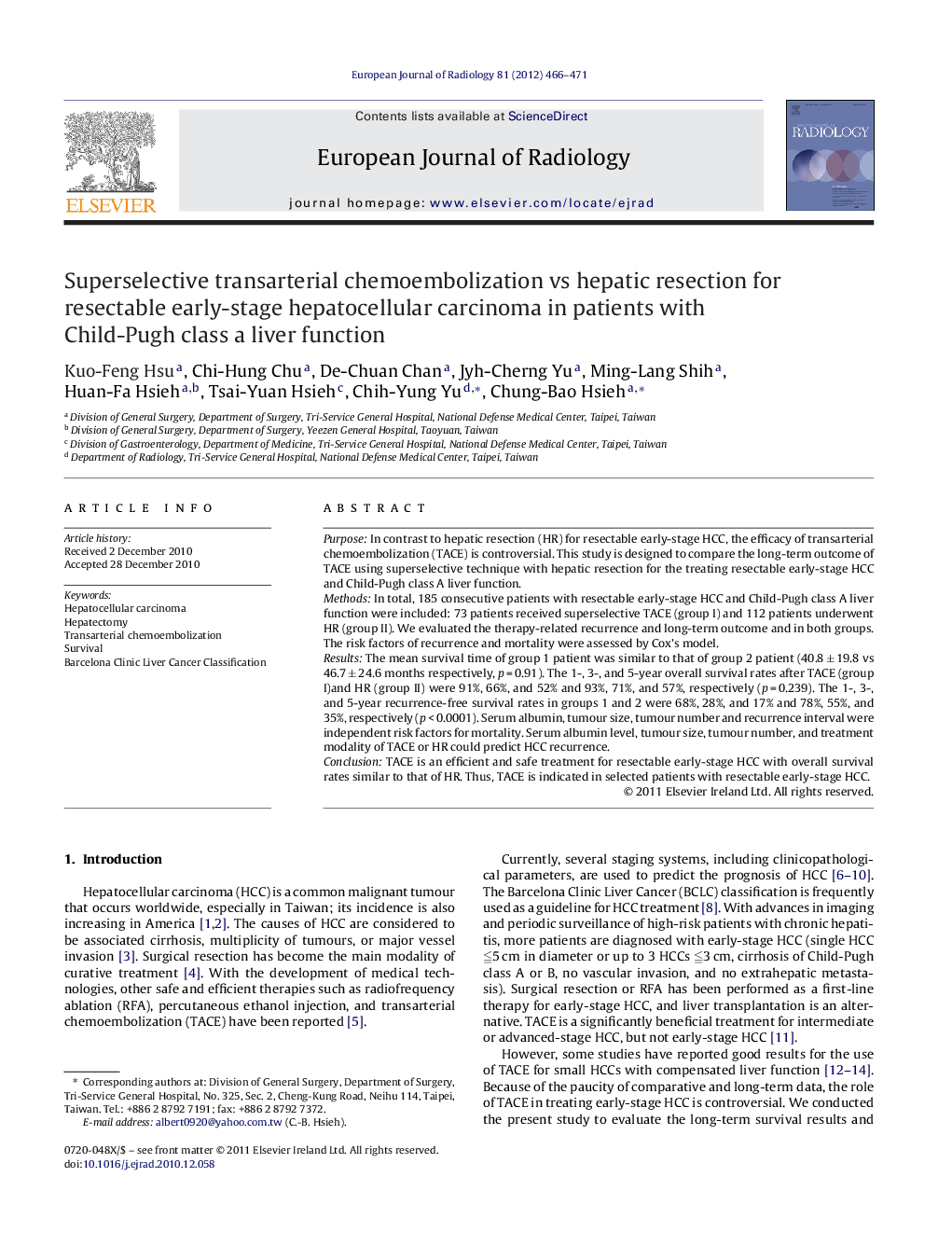| Article ID | Journal | Published Year | Pages | File Type |
|---|---|---|---|---|
| 4226436 | European Journal of Radiology | 2012 | 6 Pages |
PurposeIn contrast to hepatic resection (HR) for resectable early-stage HCC, the efficacy of transarterial chemoembolization (TACE) is controversial. This study is designed to compare the long-term outcome of TACE using superselective technique with hepatic resection for the treating resectable early-stage HCC and Child-Pugh class A liver function.MethodsIn total, 185 consecutive patients with resectable early-stage HCC and Child-Pugh class A liver function were included: 73 patients received superselective TACE (group I) and 112 patients underwent HR (group II). We evaluated the therapy-related recurrence and long-term outcome and in both groups. The risk factors of recurrence and mortality were assessed by Cox's model.ResultsThe mean survival time of group 1 patient was similar to that of group 2 patient (40.8 ± 19.8 vs 46.7 ± 24.6 months respectively, p = 0.91). The 1-, 3-, and 5-year overall survival rates after TACE (group I)and HR (group II) were 91%, 66%, and 52% and 93%, 71%, and 57%, respectively (p = 0.239). The 1-, 3-, and 5-year recurrence-free survival rates in groups 1 and 2 were 68%, 28%, and 17% and 78%, 55%, and 35%, respectively (p < 0.0001). Serum albumin, tumour size, tumour number and recurrence interval were independent risk factors for mortality. Serum albumin level, tumour size, tumour number, and treatment modality of TACE or HR could predict HCC recurrence.ConclusionTACE is an efficient and safe treatment for resectable early-stage HCC with overall survival rates similar to that of HR. Thus, TACE is indicated in selected patients with resectable early-stage HCC.
